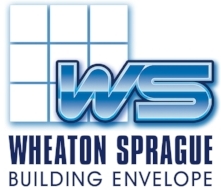Rain Screen Principle Wall Designs
/In a former newsletter, we invited many registered design professionals to visit the installation of several large 30’ X 30’ visual mock-ups of a European rain screen curtain wall system (STO AG Ventec & Verotec) which are primarily applied as D/BV curtain walls, however; while outside of the scope of that assignment, those wall products may be compartmentalized and applied as PER wall systems.
Many questions arose from invitees, and the most common question had to do with the different rain screen design principles applied to exterior curtain wall designs. Another common question had to do with why one type was more popular than the other.
We believe that there are two fundamental ‘Rain Screen Principle’ wall designs, however; there are some differences of opinions out in the community. For example, some feel that there is room for only one design principle. We recognize the following two (2) rain screen design principles:
“Rain Screen” or “Drained/Back Ventilated” (D/BV)
D/BV claddings are not designed to be watertight, and no deliberate attempt is made to minimize the structural or water penetrating effects of wind by pressure-equalization. Instead, the cavity behind the outer leaf is drained and positive back-ventilation is used to promote rapid evaporation of any rainwater deposited on the inner leaf surface. Additionally, conventional air and water test criteria cannot be applied to the outer leaf (due to its open joinery design), but should more properly be applied to the completed construction of the inner leaf.
WS is presently working on a design assist assignment with a double skin facade which is a D/BV variation.
“Pressure Equalized Rain Screen” or “Pressure Equalized / Compartmented” (PER)
As with D/BV variations, PER claddings are not designed to be watertight, however; deliberate attempts are made to minimize the structural or water penetrating effects of wind by pressure-equalization. PER claddings are more design intensive than D/BV variations. As such, they are also very sensitive to design variations and deviations from the PER design principles. The openings in the PER wall must be specifically designed to allow both static and dynamic pressure equalization to take place across the rainscreen. The essential defining attribute that differentiates PER from D/BV is the design and use of compartmentalization within the cavity.
In our opinion, the main reason for D/BV being the primary rain screen wall system of choice has much to do with cost. Another reason has to do with means & methods of most trade contractors. There are a relatively small number of trade contractors in North America that have experience & expertise with D/BV walls, and fewer with PER walls. This trend is changing, albeit slowly. Still, D/BV walls are usually an improvement (weather tightness, thermal efficiency, etc.) over the “barrier” wall systems that are most common in North America.

